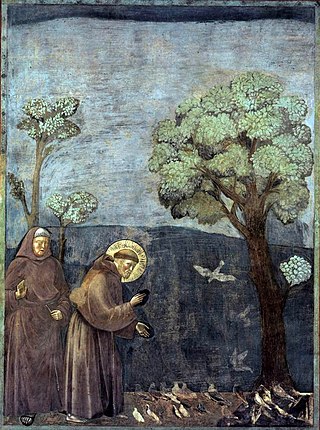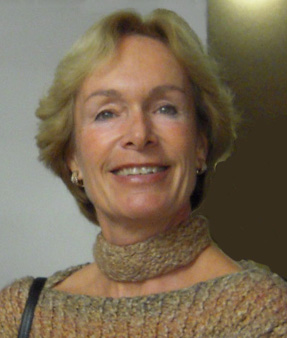
The saxhorn is a family of valved brass instruments that have conical bores and deep cup-shaped mouthpieces. The saxhorn family was developed by Adolphe Sax, who is also known for creating the saxophone family. The sound of the saxhorn has a characteristic mellow tone quality and blends well with other brass.

Olivier Eugène Prosper Charles Messiaen was a French composer, organist, and ornithologist who was one of the major composers of the 20th century. His music is rhythmically complex; harmonically and melodically he employs a system he called modes of limited transposition, which he abstracted from the systems of material generated by his early compositions and improvisations. He wrote music for chamber ensembles and orchestra, vocal music, as well as for solo organ and piano, and also experimented with the use of novel electronic instruments developed in Europe during his lifetime.
Claude Debussy's Préludes are 24 pieces for solo piano, divided into two books of 12 preludes each. Unlike some notable collections of preludes from prior times, such as Chopin's Op. 28 preludes, or the preludes from Johann Sebastian Bach's The Well-Tempered Clavier, Debussy's do not follow a strict pattern of tonal centers.

Saint François d'Assise : Scènes Franciscaines, or simply Saint François d'Assise, is an opera in three acts and eight scenes by French composer Olivier Messiaen, who was also its librettist; written from 1975 to 1979, with orchestration and copying from 1979 to 1983. It concerns Saint Francis of Assisi, the titular character, and displays Messiaen's devout Catholicism.
The Vingt regards sur l'Enfant-Jésus are a suite of 20 pieces for solo piano by the French composer Olivier Messiaen (1908–1992).
Gheorghi Arnaoudov is a Bulgarian composer of stage, orchestral, chamber, film, vocal, and piano music. His work has roots in minimal music.

Louise-Justine Messiaen, more commonly known under her pseudonym Claire Delbos, was a French violinist and composer, and first wife of the composer Olivier Messiaen.
La Transfiguration de Notre Seigneur Jésus-Christ is a work written between 1965 and 1969 by Olivier Messiaen. It is based on the account found in the synoptic gospels of Jesus' transfiguration. The writing is on a very large scale; the work requires around 200 performers. The forces required include a mixed choir, seven instrumental soloists and a large orchestra; only being surpassed by his opera Saint François d'Assise.

Harawi - Chant d'amour et de mort are a song cycle for "grand, dramatic" soprano and piano whose music and libretto were composed by Olivier Messiaen in 1945. They are considered to be the first part of the his Tristan trilogy, a collection of works inspired by the myth of Tristan and Iseult.

Siglind Bruhn is a German musicologist, writer and concert pianist.
Messe de la Pentecôte is an organ mass composed by Olivier Messiaen in 1949–50. According to the composer, it is based on twenty years of improvising at Église de la Sainte-Trinité, where Messiaen was organist since 1931.

La Nativité du Seigneur is a work for organ, written by the French composer Olivier Messiaen in 1935.
Gérard Patris was a French film director and television director who died in a car accident in 1990 in Chailles. His works include the documentary film Arthur Rubinstein – The Love of Life.

Les Animaux modèles, FP 111, is a ballet dating from 1940 to 1942 with music by Francis Poulenc. It was the third and final ballet that he composed and was staged at the Paris Opéra in 1942, with choreography by Serge Lifar, who also danced in the 1942 premiere. The themes of the ballet are drawn from the Fables of Jean de La Fontaine.
Visions de l'Amen is a suite of seven pieces for two pianos by the French composer Olivier Messiaen (1908–1992), commissioned for the Concerts de la Pléiade that were held during the German occupation of Paris. It was composed in 1943 for the composer and Yvonne Loriod, and its performance requires about 40–45 minutes.

The Cinq poèmes de Charles Baudelaire constitute a song cycle for voice and piano by Claude Debussy, on poems taken from Les Fleurs du mal by Charles Baudelaire. Composed from December 1887 to March 1889, these five highly developed vocal pieces were not well received by Parisian musical circles because of the Wagnerian influence they revealed.
Méditations sur le Mystère de la Sainte Trinité is a work for organ by the French composer Olivier Messiaen. It was composed in 1969.
Livre d'orgue is a work for organ by the French composer Olivier Messiaen, composed in 1951–52. A major work of Messiaen, its place in Messiaen's output can be compared to that of Bach's The Art of Fugue.

O sacrum convivium! is a short offertory motet for four-part mixed chorus by French composer Olivier Messiaen, setting "O sacrum convivium". It was composed and published in 1937.










